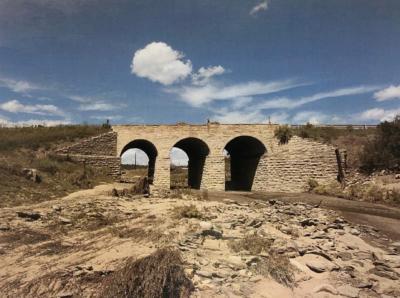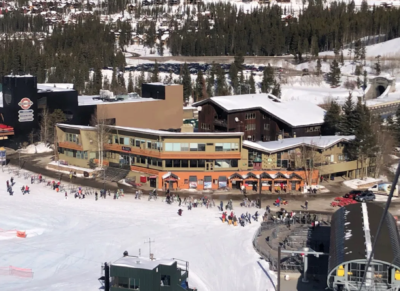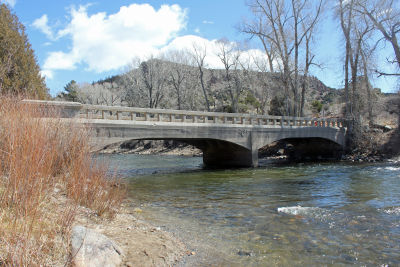Colorado’s Most Endangered Places List was recently announced by Meteorologist Dave Aguilera at the Colorado Preservation, Inc.’s (CPI) Saving Places 2021 virtual “Preservation in Action” conference.
Since 1998, Colorado Preservation, Inc. has been working with communities throughout the state to identify and save threatened or endangered historic buildings, landscapes, and archeological sites through its Endangered Places Program.
2021 marks the 24th anniversary of CPI’s Most Endangered Places list, which began in 1997. This program provides advocacy, awareness, and technical assistance to significant historic sites throughout Colorado that are in danger of being lost. CPI devotes staff time and resources to build patron-ships, raise funds, and rally concerned citizens behind projects so that sites can be saved.
Historic Bridges of Colorado

Burro Canyon Bridge located in Las Animas County. An example of the bridges CPI hopes to preserve. Image courtesy of Colorado Preservation Inc.
As a state with many distinguishing geophysical characteristics, including mountains, plains, rivers, and streams, Colorado has by necessity many historic bridges that reflect its diverse regions and heritage. But not until recently has there ever been a strong bridge preservation ethic in the state.
CPI in conjunction with the Colorado Department of Transportation (CDOT) has identified forty-six on-system bridges that represent different types, eras, and locations for preservation in place of at least 20 priority structures.
The bridges under consideration range in age from 1888 to 1973 and span the full breadth of Colorado’s bridge development, which evolved from early timber structures and steel bridges to the use of more functional and standardized designs using pre-stressed concrete in the post-World War II era. Listing these bridges will assist CPI and CDOT in developing partnerships with local communities and other organizations for funding as well as support for bridge preservation efforts.
While not yet on this list, the Chaffee County landmark known as “The Stone Bridge” is considered preservation-worthy and may someday make this list. Located near Brown’s Canyon. The bridge is located on Chaffee CR191 over the Arkansas River 6.4 miles north of Salida, Colorado.
It was built in 1908 and is now located within the Stone Bridge Recreation Area. It was named to the National Registry of Historic Places in the summer of 2014. There’s a gate blocking the south side of the bridge because it now leads to private property. It is a concrete slab and girder bridge.

Lafayette Head Home and Ute Indian Agency. Image courtesy of Colorado Preservation, Inc.
Lafayette Head Home and Ute Indian Agency
The Lafayette Head Home and Ute Indian Agency in Conejos was the center of the universe for a convergence of cultures and forces that changed the state’s history for a brief time during a formative period. It was built by early settler, businessman, and public official Lafayette Head in 1855 and played an important but little-known role in the settlement of Colorado in the period before and after statehood.
Head used his home and compound as the agency headquarters while working with Ute and Jicarilla Apache tribes for nine years during a time of conflict, settlement, and displacement. Head was instrumental in treaty negotiations with the Ute tribes in Washington, D.C. that led to the relinquishment of the San Luis Valley Lands to the United States and the establishment of the Southern Ute and Ute Mountain reservations in far southwest Colorado.
The Head House is representative of Indo-Hispano, Native American, Territorial and early Colorado architecture. Head was elected to the Colorado State Legislature and was one of 39 delegates who drafted the 1875 State Constitution. He was also elected the first Colorado Lieutenant Governor under Governor John Routt. CPI will work with local, state, educational and tribal partners to preserve and interpret the Head Home and site so future generations can understand the role the region played in the state’s history.
Winter Park Balcony House

Aerial view of the Balcony House. Image courtesy of Colorado Preservation, Inc.
Winter Park’s original base area ski lodge, known as the Balcony House, represents the early history and pioneering evolution of the City of Denver’s forest Mountain Park while also fostering groundbreaking developments in the Colorado Ski industry. CPI officials say that since 1955, the Balcony house has played an essential role in skiing, snowboarding, and summer activities and enhancing the overall experience of visitors.
The two-story structure hosts panoramic views from its balconies and is a prime example of Mid-century Modern architecture. In fact, it may be the only remaining Mid-century Modern public ski lodge in Colorado. The Balcony House is threatened by under-appreciation of its significance and uniqueness. In 2009, a Master Plan was written calling for its demolition and replacing it with five to six stories of condominiums above one level of resort operations.
Advocates for preservation think a better way can be found to accommodate future growth, operations, and programming without sacrificing the Balcony House. Listing the structure on Colorado’s Most Endangered Places is intended to be a catalyst for further discussion with the Winter Park Recreation Area and Alterra Mountain Company about how to work together to preserve the ski area’s most authentic building.
Gold Medal Orchard located in Montezuma County and Goodnight Barn located in Pueblo County were previously on the Colorado Most Endangered places list and were recognized as saved.
Over the past 24 years, this “Colorado’s most endangered” program has highlighted 130 historic sites throughout the state. 52 sites have been saved and only seven have been lost. There are currently 47 actively in progress and 24 still under alert status.
The program has a wide reach throughout rural and urban areas of the state and has helped local communities save a wide array of historic resources from agricultural and archaeological resources to commercial districts, downtown properties, cultural landscapes, ditches, kilns, barns, flumes, mining structures, schools churches, government buildings, and railroad resources.
To learn more about CPI, click here.








Recent Comments